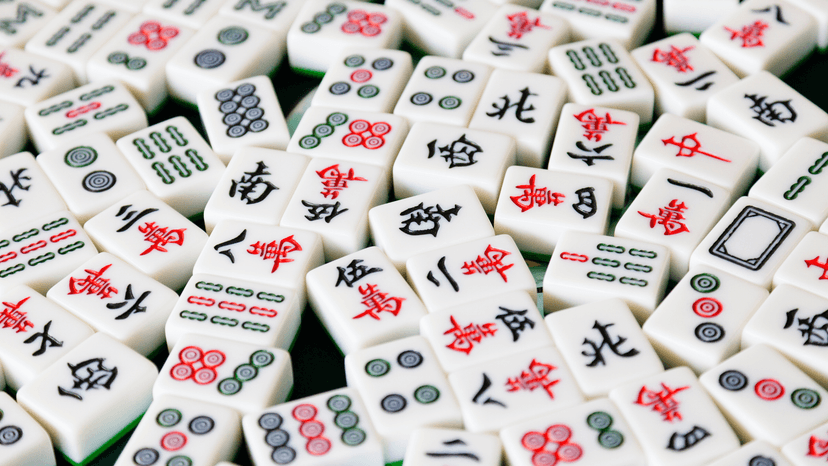Mahjong Tips and Tricks - Things To Remember

Mahjong isn't just a game of chance. Players need to master the rules and strategies to play effectively. However, there's another crucial element that most players overlook. Once you've learned how to play Mahjong, the next vital step is to familiarise yourself with all the major tips and tricks.
In this guide, we'll share the mahjong tips and tricks we know, so you don't have to worry. Let's dive in without further ado.
Start The Game With A Plan
Players should devise a strategy before playing the Mahjong game. As soon as you see a tile, start thinking about your next move. The ideal first step is to decide which tiles to keep, which to wait for, and which ones you don't want in your hand.
- Remember, your opponents are constantly observing what you discard.
- For experienced mahjong players, the tiles discarded by others offer valuable insights into their hands, allowing them to plan their strategy accordingly. Skilled players can exploit an opponent's discard to their advantage.
- Be aware that bluffing isn't always beneficial, as it can reveal your intentions and give opponents clues about your hand.
Memorising the Tiles
You can't effectively search for meld sequences if you're unsure which characters go together. This is particularly challenging if you're unfamiliar with Chinese characters. Consider using a set of Mahjong tiles that includes Arabic numerals. In addition to the traditional symbols on mahjong tiles, these Arabic numerals can help. You won't need to learn traditional Chinese calligraphy to find the tiles you're looking for.
Skipping the First Throw
Skipping the initial throw is a smart strategy in mahjong as it prevents you from revealing your plan to opponents. This can certainly help you advance in the game early on.
The downside to this tactic is that it might inadvertently reveal your potential winning hand for that round. If your opponents are keen to win, they'll already have a good idea of your strategy. Even if you could have formed a set with that throw, they'll notice and become more cautious with their discards going forward, potentially hindering your ability to form another set.
- Discarding the first tile might suggest you're still learning the game, which opponents could exploit.
- Don't be too concerned about not picking up the initial discard. You're free to discard it yourself.
- In Mahjong, players may use a variety of tiles; they simply need to wait for the right moment to assemble a strong hand that will guarantee victory.
Skipping the Gaps: A Key Mahjong Tactic for UK Players
Avoiding gaps between your tiles when arranging your rack is one of the best Mahjong tips for players in the UK. Because experienced Mahjong players are very perceptive, leaving gaps might inadvertently reveal your strategy. They can quickly identify the hand you're attempting to build and your potential next moves.
Some new players might create gaps to help them line up their tiles in combinations and figure out their next moves. However, this also signals to other players that they might be able to use similar combinations. Placing unconnected tiles and leaving gaps can confuse opponents. But, this tactic is only advised when you're certain you won't become perplexed by your own strategy.
Appropriate Scoring for Beginners
For new players, it's best to keep the scoring as simple as possible. Overcomplicating it could disrupt your game and hinder your chances of winning. The easiest approach is to award one point to the player who completes the first Mahjong, and zero points to everyone else. Tally up the points, and the player with the most points wins.
Players can explore other Mahjong scoring guidelines once they have a better grasp of the game. The rules of the Chinese Official Mahjong Competition are similar to many of these. After that, you can experiment with more challenging scoring systems, such as those for Hong Kong or Riichi Mahjong.
Point Values of The Tiles
It's also worth remembering that pongs generally have a higher point value than chows. Chows are only truly useful when you have four of them available to form a Mahjong hand. While making pongs rather than chows might seem counter-intuitive, especially if you have experience playing poker.
- A pong is equivalent to a three-of-a-kind in poker, while a chow is nearly identical to a straight.
- While chows might be valued more in poker, in Mahjong, a player could be inclined to concentrate on them, but Mahjong games have distinct hand rankings.
- If new Mahjong players learn the various meld combinations and take into account the point values for each, they will make fewer mistakes and advance more quickly.
Hiding Your Melds
You'll score more points by keeping your melds a secret until you're ready to declare Mahjong. Therefore, don't reveal them until absolutely necessary. Beginners often like to move their tiles around to see which melds they are effectively working on. While players are free to rearrange their tiles, they should try to keep them all neatly arranged.
- It's easy for opponents to see what a player is up to when full melds are revealed, or certain tiles are set aside, so they will adjust their mahjong strategy accordingly.
- A player becomes a more challenging mahjong opponent by keeping a straight row of tiles.
Discarding Your Tiles Wisely
While it might be tempting, it's not advisable to discard any tiles from your hand that don't seem to fit. Instead, focus on the tiles your rivals are tossing out.
By paying close attention to the discard pile, you increase your chances of finding the discards you need and decrease the risk of accidentally handing them to another player's mahjong hand.
What's the smartest move if you have many tiles to discard? If you're certain your opponents won't want them, it's best to discard the tile closest to others that have already been discarded.
The Power of Pairs
A pair is a hand that every player should hold onto. These are some of the most versatile tiles. You can keep them as pairs or use them to form a four-of-a-kind (Kong), a three-of-a-kind (Pung), or a group of three identical tiles (Chow).
- Don't try to break up a pair or two for this reason. In fact, as you progress in the game, they can turn out to be your winning tiles.
- It's important for a player to quickly implement their mahjong-winning techniques.
Conclusion for UK Players
To master mahjong, there are some tips and tricks that UK players must remember. Without them, you'll struggle against other players, as many observe the game and figure out others’ strategies too.
FAQ
Are there any tips and tricks for Mahjong?
Indeed, there are several strategies to improve your Mahjong game. Here are a few:
- Start with a strategy: Before you even pick up your tiles, have a general idea of what hand you're aiming for.
- Tile memory: Pay attention to which tiles have been discarded. This will help you deduce what tiles other players might be holding and adjust your strategy accordingly.
- Consider your initial discard: Don't rush into discarding your first tile. Assess your hand carefully to avoid giving away your intentions too early.
- Build a solid foundation: Focus on creating sets (Pungs, Kongs, Chows) early in the game to give yourself a strong base to work from.
What's the key to success in Mahjong?
While there's no guaranteed method for winning at Mahjong, a balanced approach is crucial. Steer your hand towards your desired outcome, but remain adaptable to changing circumstances. Avoid blindly collecting tiles; patience and thoughtful decision-making are your greatest assets.
What constitutes the ultimate hand in Mahjong?
The perfect Mahjong hand typically comprises four sets (Chows, Pungs, or Kongs) and a pair.
Is it possible to win with seven pairs in Mahjong?
Winning with seven pairs presents a unique challenge due to the limited ways to complete the hand. The odds are reduced, and you can't claim tiles discarded by other players to form these pairs.
What is the "Thirteen Orphans" hand in Mahjong?
The Thirteen Orphans (also sometimes called 13 Wonders) is a very rare and powerful hand in Mahjong. The odds of achieving this hand are approximately 1 in 2464.
Can you incorporate four jokers in a Mahjong hand?
Jokers can be used in exposed Pungs, Kongs, or Quints. However, you can't pick up a discarded tile to form a single or pair unless it's the final tile needed to declare Mahjong.







